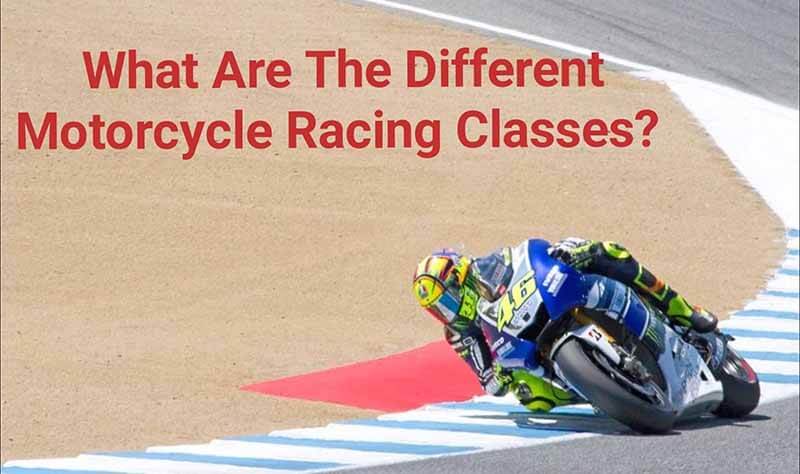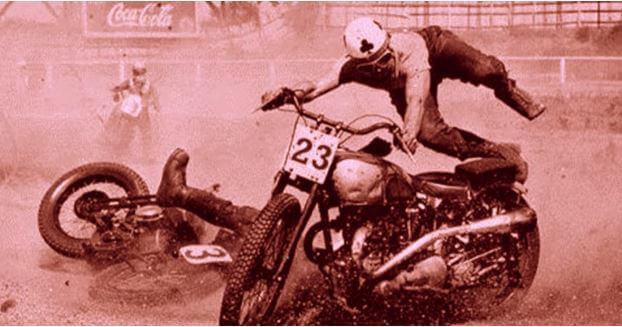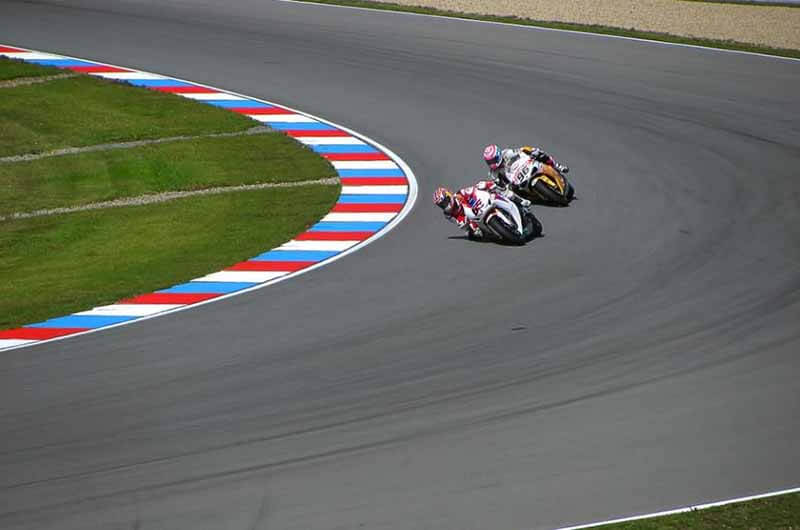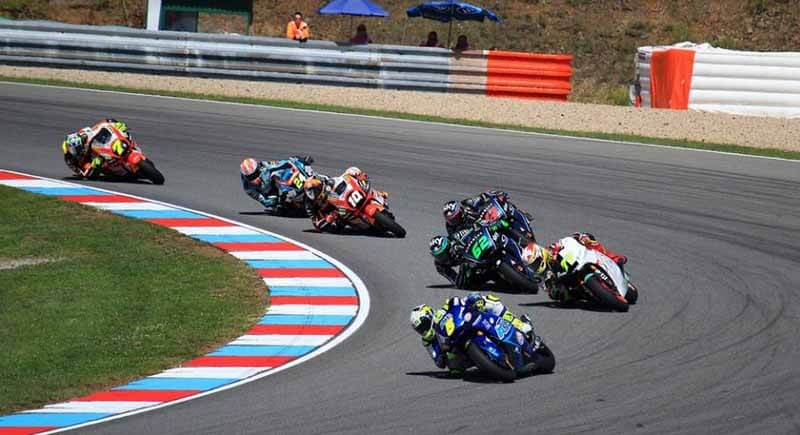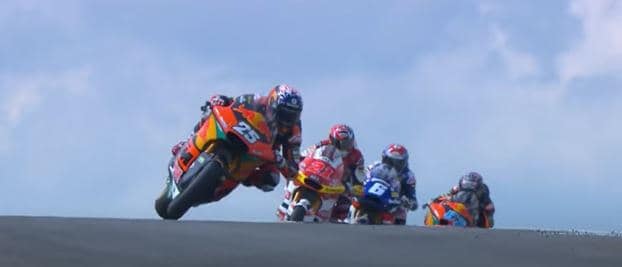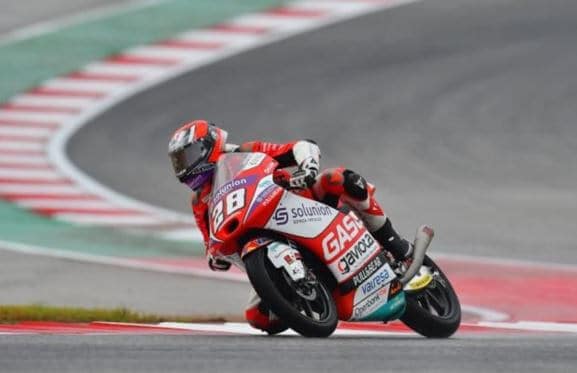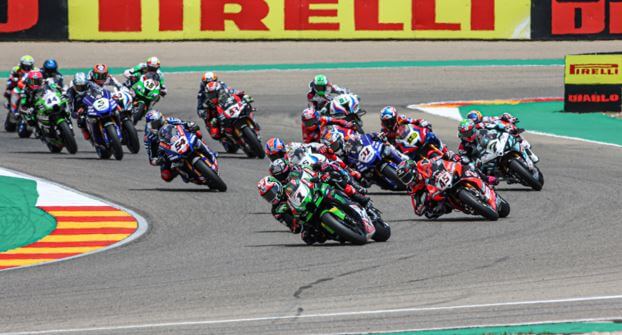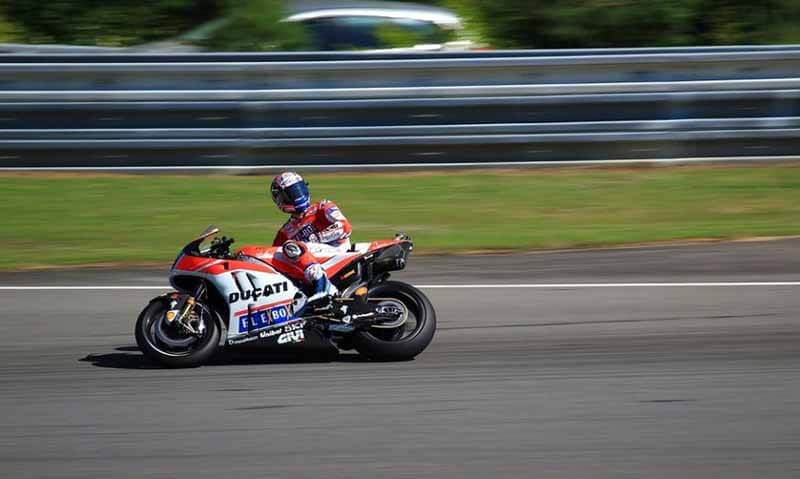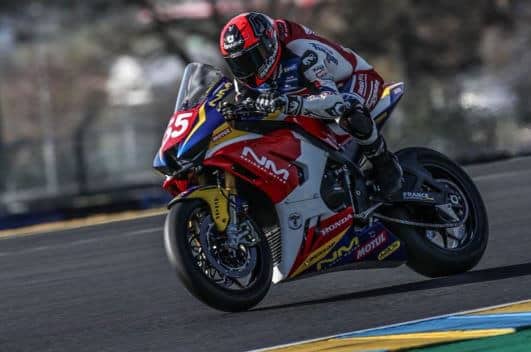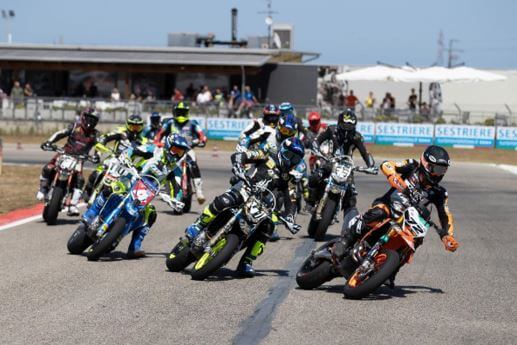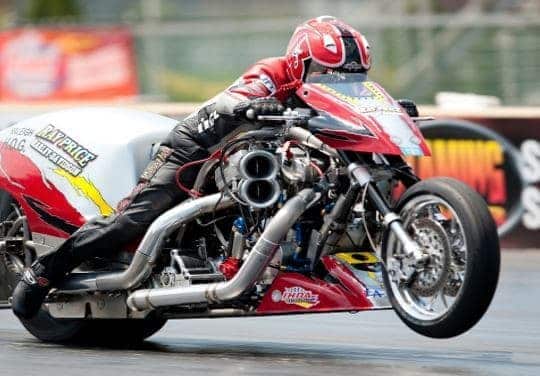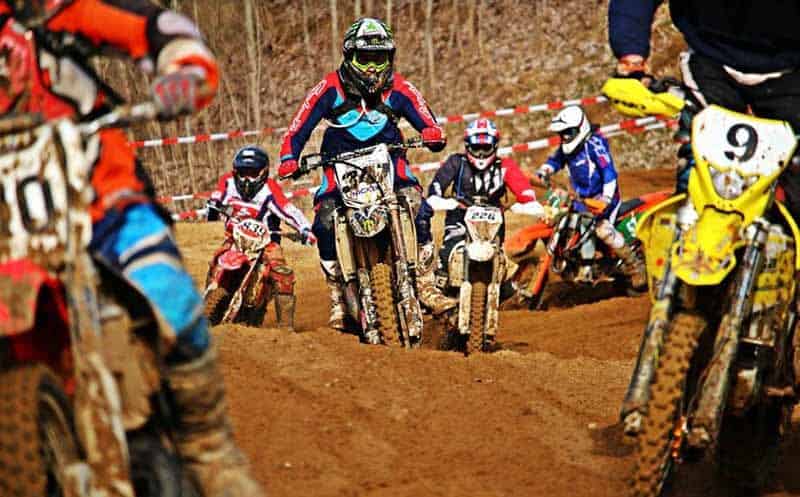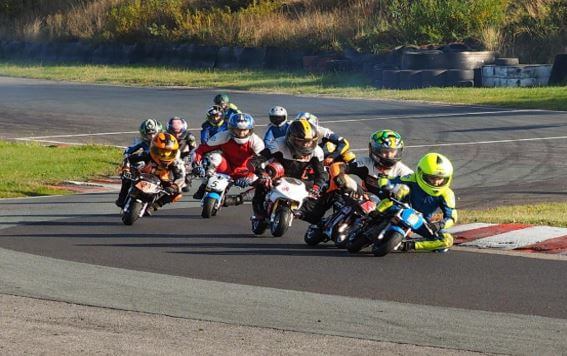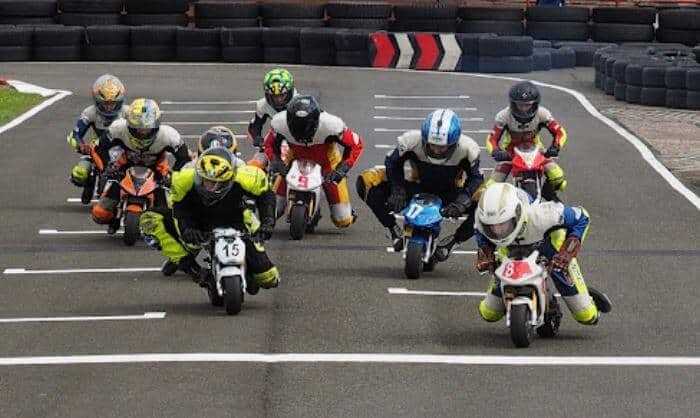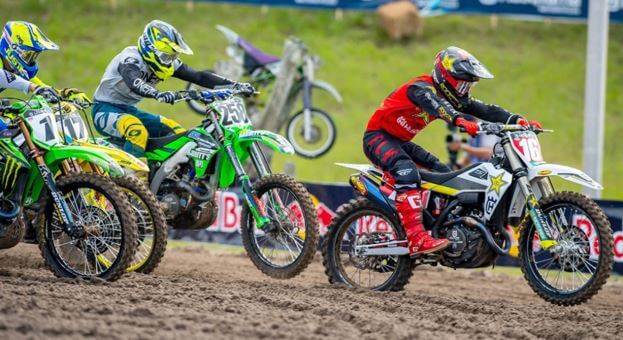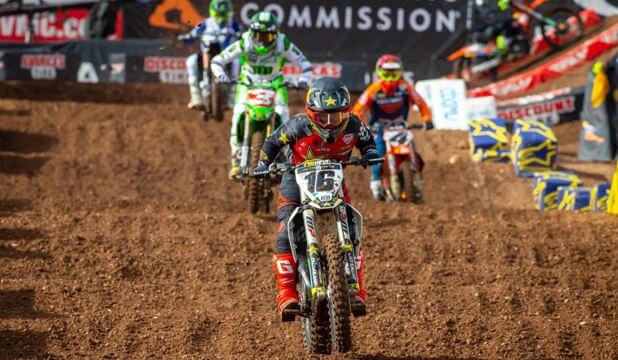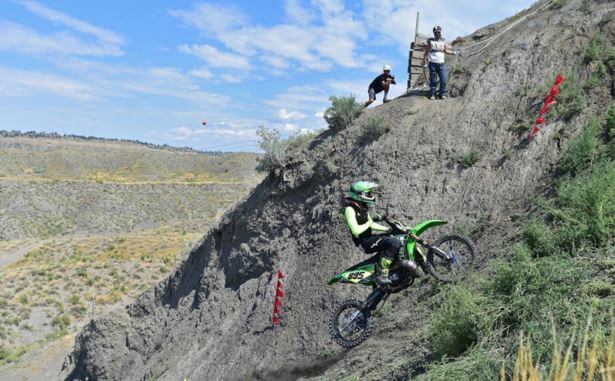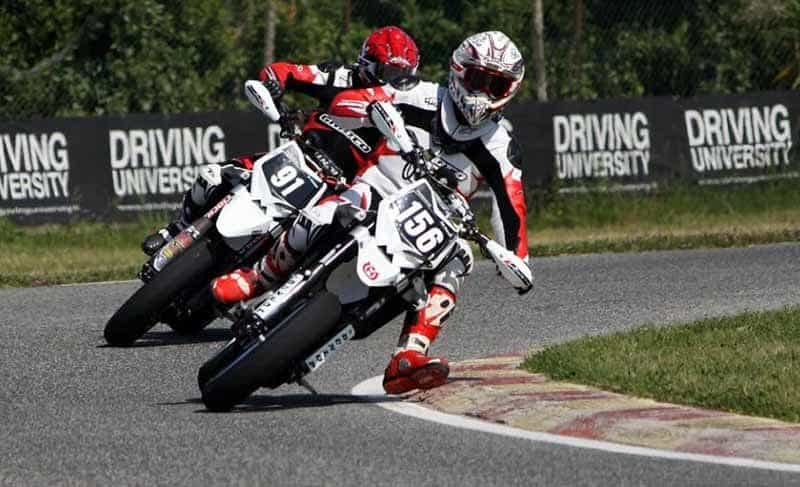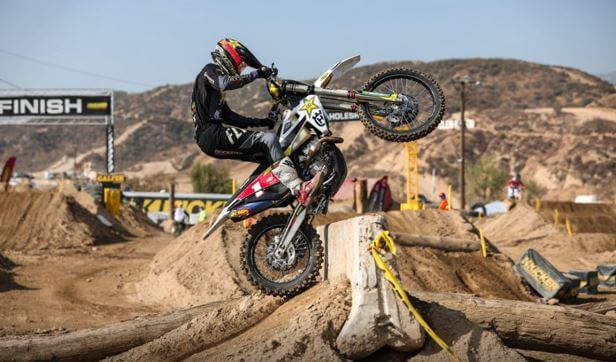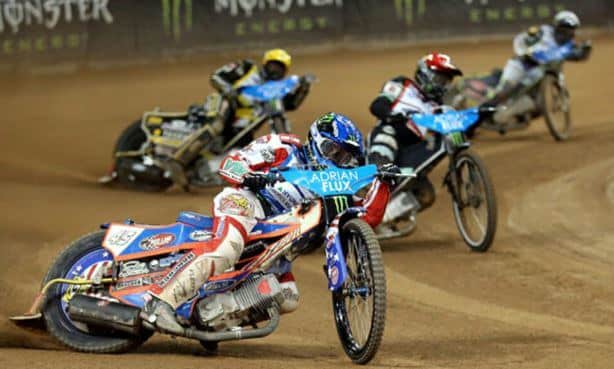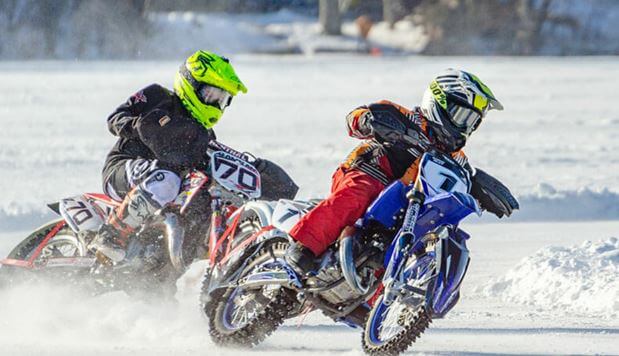Did you know that motorcycle racing in North America took off in 1903 with the formation of the Federation of American Motorcyclists (FAM)?
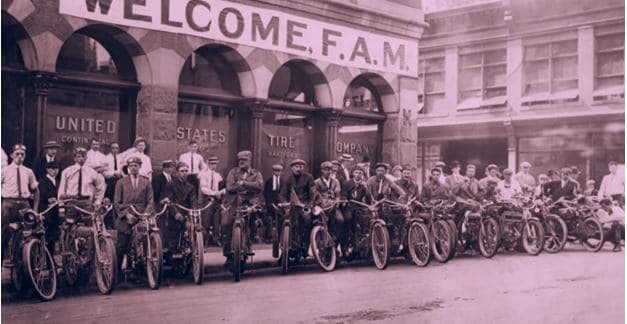
During the first years, there were less than 10 races on the calendar. In fact, only six took place in their first two editions. But as the technology advanced over the years, blazing power and design sophistication opened multiple avenues for competitors.
Today, electrifying sport has developed far beyond the imagination of its pioneers. Few, if any, could believe the agility and the power of modern racing motorcycles. They would certainly marvel at all the choices riders have to enjoy their preferred flavor of motorcycle racing.
However, understanding these different variations can be daunting, but that is what we are here for. In this article, we will explore some of the most common classes of motorcycle racing that are currently run at the world and national events.
The Different Motorcycle Racing Classes Road (On Asphalt Track)
1. Road Racing
Road racing is a motorcycle sport that involves racing on specifically built tarmac surfaces or temporarily closed public roads.
2. Grand Prix Motorcycle Racing
The FIM World Championship Grand Prix is the most popular competition in all of motorcycle road racing. The Fédération Internationale de Motocyclisme (FIM) divides the series into these three different classes based on engine capacity:
| MotoGP: | 1000cc four-stroke engines with a limited tire allowance and maximum fuel capacity of 22 liters |
| Moto2: | Triumph Triple race engines based on the Street Triple RS 765cc production engine |
| Moto3: | 250cc four-stroke single-cylinder engines |
Let’s expound further on these classes:
-
MotoGP:
The first thing that will probably come to your mind is when you hear of motorcycle racing in MotoGP. We regard it as the “Formula 1” of motorcycle racing.
Technically, MotoGP is the pinnacle class of motorcycle racing, and the bikes you will find in the series are pure prototypes, built especially with racing in mind. They are relatively lighter and stiffer, but faster than normal bikes with similar engine capacity.
Even so, there are some production rules. For instance, the engine capacity should not exceed 1000cc, they should have a maximum bore of 81mm, four cylinders, control tires, universal ECU on the dashboard, and a minimum weight of 346 pounds.
Riders also have seven engines for the entire season and use the same electronic management system (provided by the championship promoter).
Besides, FIM limits the bikes to only six gears and doesn’t allow engine turbocharging or supercharging. But when properly tuned, factory MotoGP motorcycles can deliver horsepower of up to 300 bhp (221 kW) with a sound and sight to behold.
MotoGP machines are quite rare, and you can only see them during the Grand Prix series, including the prestigious MotoGP Grand Prix of America’s race.
FIM accrues points over the racing season earned by each racer with the team association. Total points at the end of the seam determine the MotoGP winner.
My Top Recommended Trailers & Transport — CLICK HERE! I highly recommend these motorcycle trailers for their affordable yet top-notch quality, reflecting my extensive 50+ years of motorcycling experience and expertise as a rider, leader, and consultant in 25+ countries. So, whether you're a seasoned rider seeking an upgrade or a new enthusiast starting your journey on two wheels, I'm confident that these gear recommendations will serve you exceptionally well. |
-
Moto2:
The middleweight Grand Prix racing class Moto2 uses the Triumph Triple 765cc race engine based on the powerplant from the class-leading Street Triple RS, itself derived originally from the iconic Daytona Supersport 675cc bike.
An outcome is a machine that revs harder and breathes freer than the production bike, as well as churns out more than 140PS of power.
Quite a few manufacturers make Moto2 chassis, but the most dominant brand is Kalex. The German specialty engineering company has been so successful in designing and manufacturing high-performance motorcycle frames made of materials highly resistant to torsional and tensile forces-it has a near-monopoly on the world championship grid.
Moto2 adopts the racing format used by MotoGP.
-
Moto3:
Moto3 is the entry-level category of the Grand Prix racing and comprises tiny purpose-built 250R bikes, which replaced the 125R in 2012. The division traditionally allows a multitude of technical changes. The chassis design and build are not subject to restrictions.
Each Moto3 motorcycle uses a four-stroke single-cylinder engine with a capacity of 250cc. The cylinder measures 81mm in diameter and has a maximum speed of 48 HP at 13,000 rpm.
Like most 185-pound low-powered bikes, Moto3 provides super close racing. For instance, the Moto3 Grand Prix of the Americas series sees a close battle between the Austrian KTM factory and Japanese giants Honda. Previously, Indian company Mahindra has also been involved, while Husqvarna runs with their re-badged KTM.
The minimum age limit of Moto3 racers is 16. The maximum is 28.
World Superbike
If you are a motorcycle enthusiast, you have probably heard of the term “Superbike,” but what exactly is World Superbike (WSB)?
Well, it is a class of motorcycle racing that employs highly changed production engines, unlike MotoGP in which they use purpose-built bikes.
As opposed to their MotoGP counterparts, superbikes are readily available in shops, from the Aprilia RSV4 RF to the BMW S1000RR and Kawasaki ZX-10R. The rules on tuning them are also much freer, although still restricted.
The minimum weight is 370 pounds, and the engine capacity ranges from 750cc to 1200cc based on the number of cylinders (from two to four). Apart from that, riders can also modify the exhaust, brakes, suspension, and engine to raise the power to over 230 bhp.
However, electronics is the biggest area where differences exist between the AMA Superbike Championship and FIM World Superbike Championship.
For instance, the design of the bikes in the AMA Superbike Championship includes an engine control unit (ECU) that limits the rider’s performance. They also lack traction control and numerous electronic aids.
WSB bikes have sophisticated electronic features such as traction control, launch control, and engine braking system. The difference is the main reason WSB bikes are usually a few seconds a lap faster than those in the AMA.
But when compared to MotoGP, WSB machines are slower. Fortunately, the series regularly races on the same tracks as MotoGP, providing us with a good comparison of lap times. For example, at the MotorLand Aragón, 2020s WSB pole position for Race Two was 1:49.884 compared to 1:46.635 for MotoGP.
Like in the MotoGP, the minimum age for qualification in WSB racing is 18.
SuperSport
Supersport is a motorcycle racing competition on paved surfaces. It is split up into various classes to encourage fierce competition between the selection of manufacturers and riders of various age groups.
The Supersport Classes Are:
| WorldSSP: | 675cc three-cylinder, 600cc four-cylinder, and 750cc twin-engine cylinder motorcycles |
| WorldSSP300: | Motorcycles aren’t exclusively 300cc engine capacity |
Below, we explain these classes in more detail:
-
World Supersport (WorldSSP)
World Supersport is the main support class for superbikes in both the FILM and AMA championships. Currently, only mid-range 675cc three-cylinder, 600cc four-cylinder, and 750cc twin-engine cylinder machines are eligible to compete, with the Yamaha R6 and the Kawasaki ZX-6R dominating the championship in recent seasons.
However, the new rules intend to open the class to newer middleweight bikes, such as Triumph’s Street Triple 765 RS, MV Agusta’s new 800cc F3 RR, and Ducati’s 955cc Panigale V2, in 2022.
WorldSSP bikes are smaller, lighter, and less powerful than their WSB counterparts, but allow fewer modifications. You can modify the chassis in line with the Superstock classes, use aftermarket electronics, and turn the engine.
When properly tuned, they can deliver a horsepower of around 150 bhp from a high revving 600 in a 355-pound chassis and can hit speeds of over 160 miles per hour over the 40-mile sprint race.
-
World Supersport 300 (WorldSSP300)
WorldSSP300 is a fiercely contested feeder class introduced in 2017 for inexperienced riders between the ages of 15 and 25. It features A2 license class sportbikes with different engine capacities, ranging from 300 to 500cc.
Limits imposed by the FIM are:
KTM RC390/RC390R: Single-cylinder engine, limit revolutions per minute, and minimum weight of 300 pounds.
- Kawasaki Ninja 300 and Ninja 400: Twin-cylinder engine, limit revolutions per minute 10,850 RPM, and minimum weight of 331 pounds.
- Honda CBR500R: Twin-cylinder engine, limit revolutions per minute 11,200 RPM, and minimum weight of 315 pounds.
- Yamaha YZF-R3: Twin-cylinder engine, limit revolutions per minute 13,100 RPM, and minimum weight 309 pounds.
They all are subject to modifications to weight, engine, and rev limits to ensure the maximum possible parity.
You can remove the road-going gear, add race bodywork, use rear seats (racing footpegs) and clip-on (handlebars), and upgrade the suspensions with replacement rear shock absorbers. However, apart from a racing exhaust system, you can’t tune your engine.
In the AMA Superbike Championship, Supersport 300 is a support class, which is known (more accurately) as the Liqui Moly Junior Cup, or Junior Cup. It is a model after the FIM Supersport 300 World Championship.
Superstock
Superstock racing provides one of the biggest grids in the world of motorcycle riding series. We regard it as the backbone of club racing. This is because FIM and AMA allow only minimal changes to the bikes, which affects their cost.
There are two Superstock classes:
| Superstock 600: | 401cc-600cc 4-cylinder, 675cc 3-cylinder, or 750 2-cylinder machines |
| Superstock 1000: | 750cc-1000cc 4-stroke 2-4 cylinder or 850cc-1200cc 4-stroke 2-cylinder machines |
Let’s expound further on these classes:
-
Superstock 600
Superstock 600, especially the feature class in the North American Road Racing series, aims to accommodate younger riders, especially those stepping up from Supersport racing. The most competitive brands in the class include the Kawasaki ZX-6R, Yamaha YZF-R6, and the Daytona 675.
The only reason the Daytona 675 takes part in the Superstock 600 racing class is that it has a three-cylinder engine (against the 600cc fours).
Only normal unleaded fuel with a maximum lead content of 0.005 g/l (unleaded) and a maximum MON of 90 may be used. No modifications are allowed to the wheels, spacers, bearings, front/rear forks, frame body, and rear subframe.
-
Superstock 1000
This is one of the best racing classes that attracts youth and motorcycle enthusiasts. It features the latest 1000cc bikes with sophisticated performance tunes.
The MotoAmerica Stock 1000 engine configurations are four-stroke three-four cylinders with an engine capacity of over 750cc up to 1000cc and four-stroke two-cylinders with a capacity of between 850cc and 1200cc. The minimum motorcycle’s weight is 374 pounds and the rider’s minimum age limit is 17 and the maximum is 55.
Superstock 1000 class provides riders with an opportunity to gain experience aboard open class sportbikes with an eye toward eventually moving up to the Superbike class.
Supermoto
Supermoto races happen on a 3/8th-mile to a mile track combining pavements and dirt with left- and right-hand turns. The rack is normally 30 percent dirt (with at least one jump) and 70 percent pavement.
The AMA Supermoto categories include:
1. Pro-Am Classes
Contains only previously A classification or AMA Pro License holders within the past two years. Pro-riders do not qualify for awards and cannot race in amateur classes except A class unless specified in rules.
Unless otherwise stated, unlimited modifications apply to:
- Open Pro/Am: 250-unlimited cc single-cylinder or 250–575 cc twin-cylinder machines.
- 450 Pro/Am: 125cc-250cc 2-stroke single-cylinder, 250cc-450cc 4-stroke, or 250cc-450cc twin-cylinder machines.
- 250 Pro/Am: 125cc-144cc 2-stroke single-cylinder or 200cc-250cc 4-stroke machines.
- ATV Pro/Am: Pro or Expert rider, unlimited displacement single-cylinder or twin-cylinder machines with original stock frame and ATV engine cases. The minimum age is 16
2. Amateur Classes
The minimum age allowed is 14 and bikes have unlimited modifications. What’s more, street-legal Supermoto motorcycles can maintain the 17-inch front wheels if sold in the United States or Canada. DOT tires are mandatory.
| 250 | 125cc-144cc 2-stroke single-cylinder or 200cc-250cc 4-stroke single-cylinder motorcycles | 450 | 125cc-250cc 2-stroke single-cylinder or 250cc-450cc 4-stroke single cylinder or twin cylinder motorcycles |
| Open | 250cc-open single-cylinder or 250cc-575cc twin-cylinder motorcycles | Vet 30+ | 125cc-open single cylinder or twin cylinder motorcycles |
| Senior 40+ | 125cc-open single cylinder or twin-cylinder motorcycles | Sportsman | Open engine capacity single cylinder or twin-cylinder motorcycles |
| Senior Super Mini | 85cc-112cc two-stroke single-cylinder or 125cc-150cc four-stroke single-cylinder engines. Unlimited modifications but must maintain the mini chassis. | Pit Bike | 75cc-150cc two-stroke single-cylinder air-cooled motorcycles with unlimited modifications. But they must maintain the mini chassis. The maximum wheel size is 17 inches. |
There is also an ATV Open (16+) class, which contains open engine capacity ATVs with any stock frame, but original ATV engine cases. You may add any material to the OEM frames with the exception that these changes shall not affect the geometry of the frame.
Youth Classes
| 50cc | 0cc-51cc 2-stroke or 0cc-51cc 4-stroke motorcycles. They must maintain the original cylinder, bore, stroke, heads, displacement, and crankcase, but can change the stock airbox, chassis, tires, levers, grips, and brake pads. The maximum wheel diameter is 12 inches and participants must be between 4 and 8 years old. | 65cc | 7- to 11-year-old competitors on 52cc-65cc 2-stroke or 52cc-90cc 4-stroke motorcycles. AMA consents to unlimited modifications, but bikes must maintain the mini chassis. The maximum wheel size is 14 inches. |
| 85cc | 66cc-85cc 2-stroke or 75cc-125cc 4-stroke motorcycles. AMA consents to unlimited modifications, but bikes must maintain the mini chassis. The maximum wheel size is 17 inches. The AMA may split the class to accommodate age 7-11 and age 12-15 categories. | Super Mini | 12- to 15-year-old riders on 80cc-112cc 2-stroke or 75cc-150cc 4-stroke motorcycles. AMA consents to unlimited modifications, but bikes must maintain the mini chassis. The maximum wheel size is 19 inches front and 17 inches rear. |
In Canada, the Cascadia Supermoto class structure has been designed to make sure each rider has a minimum of two classes for them.
However, it is unacceptable to ride sportbike-style motorcycles and over 580cc twin-cylinder or more than two-cylinder engines (unless competing in Heavyweight class). Use of exotic fuels, supercharging, and turbocharging is also illegal, but race gas is obviously permitted.
Cascadia Supermoto Classes Are:
| Open | You don’t need to be a professional to enter this class. You only need some racing experience to ride the unlimited machinery (unlimited displacement and modifications). | Intermediate | This class is for skilled racers who are not experienced riders, or slower riders who are less comfortable in the Open class, on any motorcycle (unlimited displacement and modifications). |
| Beginner/Novice | Features slower racers on any motorcycle (unlimited displacement and modifications). No seasonal rewards or points. | 450 Supermoto | Riders race on 450cc (or less) 4-stroke water-cooled and 300cc (or less) for two-stroke engines with unlimited modifications. |
| 250/400 Supermoto | Riders race on 250cc (or less) 4-stroke water-cooled, 220cc (or less) 2-stroke, and 480cc (or less) air-cooled engines. Also featured are 400cc (or less) 4-stroke engines with 100 percent OEM brakes and rims. All 250/400 Supermoto class machines have unlimited modifications. | Vet 30+ | Riders must be at least 30 years old, racing on any machine with unlimited displacement and modifications. |
| Vet 45+ | Riders must be at least 45 years old racing on any machine with unlimited displacement and modifications. | Asphalt Only (Expert) | A class for expert riders and accepts any machine with unlimited displacement and modifications. They race on an asphalt course. |
| Asphalt Only (Amateur) | A class for expert-level mini riders and accepts any machine with unlimited displacement and modifications. They race on the asphalt section. | Mini’s (Dirt Only) | Mini riders race on the dirt section on 230cc (or less) 4-stroke air-cooled, 165cc (or less) 4-stroke water-cooled, and 105cc (or less) 2-stroke motorcycles with unlimited chassis/frame modifications. |
| Mini GP (Pavement Only) | Mini riders race on pavement sections on 230cc (or less) 4-stroke air-cooled, 165cc (or less) 4-stroke water-cooled, and 105cc (or less) 2-stroke motorcycles with unlimited chassis/frame modifications. | Jr’s (Dirt Only) | Contains riders under 14 years old racing on 230cc (or less) 4-stroke air-cooled, 165cc (or less) 4-stroke water-cooled, and 105cc (or less) 2-stroke motorcycles with unlimited chassis/frame modifications. |
Drag Racing
Motorcycle drag racing, also referred to as sprints, entails two competitors lining up at a drag strip with a signaled starting line. Once the signal goes on, they race down a 0.40- or 0.20-kilometer long, two-lane, paved track where the system records their elapsed time and terminal speed. The rider to reach the finish line first is the winner.
The AMA Dragbike splits drag racing into various classes to equalize performance. There are two major groups: Pro Bike and Sportsman Bike classes.
1. Pro Bike Classes:
- Top Fuel Bike: Four-cylinder motors, producing 1000bhp and running low 6 seconds at 220mph plus. Top Fuel Bikes allowed modes that include nitrous oxide, turbo, and running on alcohol fuels.
- Super Twin: Qualifying bikes restricted to a maximum of two cylinders. That means supercharging, fuel injection and nitromethane are in, as are thundering, awe-inspiring high 6 seconds 200mph performances.
- Pro Stock Bike: Bikes built to tightly controlled regs, ensuring and emphasizing rider’s skills and tuning expertise.
- Super Street Bike: Stretched out bikes with treaded tires without wheelie bars, nitrous, and big turbo conversions.
2. Sportsman Bike Classes:
| Funny Bike | Must resemble a road-going bike but have in force no engine or fuel restrictions. Can run high 6s at around 200mph. | 9.5 Bike | Allowed bikes ride to a 9.50-second index. Modifications involve the chassis/frame. |
| Competition Bike | Competition Bike: Allows anything to run 7s and 8s. | ET Bike | A dial-in class comprising road-legal and full-on race bikes, running to a low ET of 8.70 seconds. |
| 8.5 Bike | Highly changed street bikes running to the 8.50 index. | SuperTwins Top Gas | Heads up class for twin-cylinder motorcycles. |
To accommodate riders from all age groups, the AMA also has the Junior Bike class that features competitors between the ages of 12 and 18.
Endurance Racing
Endurance racing is a unique motorcycle sport that tests the durability of the machine and endurance of competitors. For one, the races are, in part, run at night, including the eight-hour competitions. Riders also use any type of tire they want, unlike in most other racing types.
Another uniqueness involves participants running across the track at the start before jumping on their bikes. In long-distance events, teams have multiple riders to cover the distance in a single competition. They can swap over during the refueling, as the technicians change wheels and fill up the tank.
Endurance racing has two classes, each with its own separate results sheet.
-
Formula EWC
This is the top class in endurance racing and contains 600cc-1000cc 4-stroke 4-cylinder, 750cc-1000cc 4-stroke 3-cylinder, or 850cc-1200cc 4-stroke 2-cylinder engine. The bikes have black number plate background and white-light headlights.
They weigh a minimum of 386 pounds for races happening partly at dark and 375 pounds for races not scheduled partly during the night.
FIM doesn’t allow the modification of the bore and stroke to reach class limits once the bikes have been homologated, but you can improve the damper, brakes, exhaust, fork, and swing arm to enhance performance. FIM also gives teams a relatively free hand to tune up the performance of the engine.
The chassis in the Formula EWC motorcycles have a quick wheel removal system, making the tire switch easier.
-
Superstock
A red license plate background and yellow headlamps make Superstock motorcycles noticeable on the track. The bikes run on the 750cc-1000c 4-stroke 3-cylinder or 850cc-1200cc 4-stroke 2-cylinder engine and are similar to production version bikes, with minimal modifications possible.
The displacement capacities and wheels must remain at the homologated size. You can’t modify the bore and stroke to reach class limits. However, you are allowed to change the exhaust silencer, clutch reinforcement, injector jets, and fuel mapping.
Whereas FIM permits the quick release in the Formula EWC class, Superstock bikes use a standard wheel change technique, so an effective race strategy is important to change tires during refueling stops.
In both Superstock and Formula EWC classes, the fuel tank is modified to a maximum capacity of 24 liters and fitted with a quick refueling tool.
The minimum weight of Superstock motorcycles is 386 pounds.
MiniMoto
If you are a rider, family, fun seeker, or in search of a new adventure, MiniMoto racing is the sport for you. All the fun is on smaller displacement and smaller-sized motorcycles.
MiniMoto is a great way to learn, test, develop, sharpen, push your limits, and find the boundaries of skill. It takes place on a kart racing asphalt track with young people and beginners from age five and above starting off on 50-125 cc machines.
The more experienced racers find themselves on 100-150 cc bikes. It also allows full-size bikes from 125cc two-strokes up to 450cc four-strokes.
MiniMoto Classes Are:
| Stock Moto | Accepts 100cc-125cc 4-stroke air-cooled dirt bikes, including bone stock Honda Grom and Kawasaki Z125, as well as CRF110F, CRF125, and KLX110. No allowed chassis, internal engine, small wheel modifications but may change gearing and springs. | Formula 2 (F-2) | 160cc 4-stroke air-cooled and 75cc 2-stroke air-cooled bikes. Like in the Formula 3 class, AMA permits unlimited mods on mid-sized bikes, but the Mini GP chassis must remain stock (Ohvale, Bucci). |
| Super Street 125 | Grom/Z125 permitted. Super Stock Swingarm, chassis, and wheels. Limited performance mods on the stock engine. Allowed changes include suspension, controls, and gearing. | Formula 3 Amateur/Expert (F-3) | 125cc 4-stroke 2-valve air-cooled, 75cc 2-stroke air-cooled, and 62cc 2-stroke liquid-cooled machines. AMA permits unlimited modifications on mid-sized bikes, but the Mini GP chassis bikes must remain stock (Ohvale, Bucci). |
| Formula 1 (F-1) | 125cc 4-stroke, 80cc 2-stroke air-cooled, and 65cc 2-stroke liquid-cooled machines. Unlimited modifications to exhaust, frame, wheel size, engine, braking system, and engine. Ages 17 & over. | Supermini & Supermini Vet | Both of the classes have bikes with GP & Motard frame, with a maximum displacement of 112cc 2-stroke and up to 150cc 4-stroke. Unlimited engine mods are acceptable. Stock Ohvale/Bucci 160 allowed. Be at least 30 years to take part in the Supermini Vet class. |
Another famous MiniMoto class is the Youth Open, which is limited to 50cc 2-stroke and 110cc 4-stroke machines. It features Ohvale or Bucci STOCK USD Spec bikes, such as Honda XR100, CRF100, Grom MSX125, and Yamaha TTR125 (all versions), with no engine modifications.
Allowed changes include jetting, adjustments, and gearing of stock spec suspension. 110,160, and 190/212 race in separate waves. Participants’ minimum age limit is 5. The maximum is 17.
Off-Road (Dirt, Ice, or Anything Not on Asphalt Track)
Motocross
Motocross (MX) is the main off-road form of road racing and takes place on uneven surfaces, usually grass, mud, sand, or dirt, with changes in elevation. There are variations on MX classes depending on the race entered and even the section of the country.
In the U.S., the AMA Motocross Championship consists of 12 rounds at 12 major tracks all over the country.
-
Adult Classes:
| 450cc | 150cc-250cc for two-stroke and 250cc-450cc for four-stroke engines |
| 250cc | 0cc-125cc for two-stroke and 50cc-250cc for four-stroke engines |
| Women’s | 122cc-250cc engines |
-
Youth Classes:
| Limited Peewee Junior (4-8 Years) | 0cc-51cc two or four-stroke | 65cc (7 – 11 years) | 59cc- 65cc two-stroke |
| 85cc (9-15 Years) | 79cc- 85cc two-stroke | SuperMini (12-16 years) | 79cc-112cc two-stroke and 75cc-150cc four-stroke |
| Schoolboy 1 (12-17 Years) | 86cc-125cc two-stroke, 75cc-150cc four-stroke, 122cc-150cc two-stroke, and 126cc-250cc four-stroke | Girls Junior (9-16 years) | 59cc- 85cc two-stroke, 79cc-112cc two-stroke, and 75cc-150cc four-stroke |
| Mini-E Junior (4-8 Years) | 1kWh electric motor or 1.5kWh electric motor |
-
Amateur Classes and Age Groups:
| 125cc | 122cc-125cc two-stroke only motorcycles |
| 250cc | 122cc-250cc motorcycles |
| 14- 24 Years | 122-open cc motorcycles |
| Women (12+) | 99cc-250cc motorcycles |
Other amateur and age classes like, Senior (40+, 45+, 50+, 55+, 60+), Vet (25+, 30+, 35+), and Open, allow 122 to open cc engine capacity.
It is worth noting that the popularity of MX as well as the different abilities of competitors, age of machines, age of competitors, and engine displacement limits have led to the establishment of variations like Supercross.
Supercross
While we hold Motocross on long courses built purposely on the dirt and terrain put up by nature, we make Supercross racetracks from dirt hauled into stadium-type facilities.
It takes all the exhilarating challenges of outdoor riding-bumps, obstacles, jumps, steep hills, and turns-intensifies them and puts them in a direct view of spectators. The soil condition can be rutted, hard-packed, muddy, soft, or any combination therefrom.
Supercross races are run as part of the Monster Energy AMA Supercross, an FIM World Championship. There are two divisions of racing: the 450SX Class and the 250SX Class.
-
450SX Class:
The number 450 represents the size of the engine, as measured in cubic centimeters of displacement (4-stroke x single bore cylinder). As a result, the machines are more powerful than the small bikes, but sound a bit more grunty and weigh a little more. In fact, the minimum weight requirement in the class (251-450cc) is 220 pounds.
Once the 450SX Class motorcycles have been homologated by AMA, you may not modify the stroke, bore, type of cooling system, and exhaust power valves. Turbocharging or supercharging is also not allowed.
You can identify bikes in this class by just looking at the number plates on the front and on both sides. They use black numbers on a white background. The red plate and white numbers show the Current Points Leader in the series.
The 450SX Class has a Main Event at night’s end—20 minutes plus one lap. However, the Supercross starting gate only accommodates 22 riders, so the top 40 from afternoon qualifying compete in two 20-man Heat Races (6 minutes + 1 lap) and the Last Chance Qualifier (LCQ).
The best nine finishes from each heat proceed to the Main Event while the remaining contest in the Semi Last race. Those who do not qualify there have one last shot in the LCQ (5 minutes + 1 lap). Only four riders from the LCQ and the Semi-Final make the last cut.
-
250SX Class:
FIM splits the 250SX Class into two regions—East Region and West Region—and both are primarily dominated by younger racers on 250cc four-stroke single-cylinder engines. The best meeting is in the annual Dave Coombs Sr. Memorial 125 East/West Shootout.
Each region has its own champion and uses the same qualifying format as the 450SX Class. However, riders in the 250SX Class compete in the LCQ and the Heat Race to qualify for the series finale. They do not award any series points to those who don’t make it to the Main Event.
The major brands you will see the racing are from Austria (Husqvarna and KTM) and Japan (Kawasaki, Honda, Yamaha, and Suzuki) capable of generating nearly 70 hp and weighing at least 212 pounds.
Like in the 450SX Class, no modifications to the bore, stroke, and cooling system are allowed. The 250s rev higher and are of the same color as the stock machines.
Hill Climb
Unlike MotoGP or Supersport, Hill Climb is a steep uphill drag race where the fastest rider to reach the top of the hill in the shortest time wins. Each rider has two attempts, and if no one reaches the top, the one who made it the furthest wins the race.
Besides, not all races have steep hills. Some have speed hills, where the rider with the shortest time becomes the winner. Other hills are technical and will require a high level of expertise to meander through the rocks and make it to the summit in the shortest time.
Depending on the series, AMA categorizes bikes into different classes.
AMA Hillclimb Grand Championship
Each summer, working with a top chartered promoter, the AMA sanctions the AMA Hillclimb Grand Championship. The event features hundreds of the country’s hill climbers and is categorized into these classes.
-
Youth Classes:
| Micro Mini | Engines displacing 0c-50cc with automatic transmission and maximum 12-inch wheels. In case the bikes have a manual transmission, AMA allows you to place them in gear at the starting line and remove the shift lever so that they cannot shift it on the hill. Accommodates 4- to 8-year-old riders. |
| 65cc | 0cc-65cc 2-stroke and 0cc-90cc 4-stroke engines. The maximum wheel size is 14 inches and accommodates 6- to 11-year-old riders. |
| Mini Junior | 52cc-85cc 2-stroke and 52cc-125cc 4-stroke engines. Maximum 16-inch rear and 19-inch front wheels. Accommodates 7- to 11-year-old riders. |
| Mini Senior | 66cc-85cc 2-stroke and 75cc-125cc 4-stroke engines. Maximum 16-inch rear and 19-inch front wheels. Accommodates 12- to 15-year-old riders. |
-
Amateur Classes:
| 125 | 86cc-125cc engines | 750 | 601cc-750cc engines |
| 200 | 126cc-200cc 2-stroke and 126cc- 250cc 4-stroke engines | Open | Engines displacing 751 CC and over |
| 250 | 201cc-250cc engines | Senior | Any engine size motorcycle and accommodates 40 + year old riders |
| 450 | 251cc-450cc engines | Women | Motorcycles or mini-cycles displacing at least 86cc, accommodating female riders at least 12 years old. |
| 600 | 451cc-600cc engines | ||
-
ATV Classes:
| ATV 450 | ATVs with engines up to 450cc |
| ATV Open | ATV engines displacing 451cc and over |
| ATV Senior | Riders at least 40 years old on any ATV |
-
Recommended Additional Classes:
AMA can suggest additional classes at the AMA Hillclimb Grand Championship. They include:
| Mini Girls | 0cc- 85cc 2-stroke and 0cc-125cc 4-stroke engines with a maximum 16-inch rear and 19-inch front wheels. Female riders between 4 and 15 years old. | Four-Stroke | 0cc-600cc four-stroke engines |
| Super Mini | 99cc-112cc 2-stroke and 99cc-150cc 4- stroke engines with maximum 16-inch rear and 19-inch front wheels. Riders between 10 and 15 years old. | 400 Stock | 86cc-400cc engines in matching stock wheelbase and frames |
| Super Senior | Riders at least 50 years old on any engine size | Open Stock | 401cc and larger engines in matching wheelbase and frames |
-
Exhibition Classes:
Clubs hosting the Grand Championship may decide to offer additional exhibition classes. They offer/run the classes as they see fit, whether to maximize rider entries or for any other reason.
KOTH (King of the Hill) Class
The top 10 fastest times in the AMA Hillclimb Grand Championship, including youth exclusive classes and ATV classes, take part in a one-run class at the end of the competition for the King of the Hill Championship. They may offer only a single award.
-
Verticross Class:
In the Verticross events, 2-4 riders compete side-by-side on machines, displacing at least 450cc 4-stroke or 500cc 2-stroke.
Rider’s race against each other up an elevated path on the hill (typically differs from the normal hill setting), steering through cones or around course markers. The course may vary in width.
Normally, Verticross is a non-timed event, and the Meet Referee has the ultimate word on the event result. If there is a tie, they run again the competition.
You must be at least 16 years old to compete.
-
AMA Pro Racing Hillclimb Championship
It is an annual series of trials against distance or time on a steep hill of varying degrees, from about 45 degrees to almost vertical, particularly prepared for the challenge. The AMA Pro Racing comprises these classes:
-
Xtreme Hillclimb Class
The Xtreme Hillclimb class brings about an intense mixture of extraordinary HP and precise riding skills. It is a trial against distance, which allows you to switch motorcycles (in the same class) for the remaining climbs in case the one you are competing in breaks down or is not running properly.
But first, you have to report the incident to the AMA Pro referee before the use of the backup bike. You may not rerun rides already attempted.
The class features all 451 to 700cc motors except push-rod twin-cylinder four strokes. You can change the stroke, cylinder, and bore to achieve the displacement limit. A combination of fuels or any fuel is also allowed. However, you cannot fuel motorcycles with nitrous oxide with nitromethane.
What’s more, Xtreme bikes have a six-inch metal rear fender and a front fender. Feeders deflect falling racers away from the rear of the motorcycle. You may use any type of tire, including rubber paddle tires made of solid rubber (no steel reinforcement other than standard bead), but tractor bands, diggers, or shovel pads are not allowed.
All Xtreme class riders must be at least 16 years of age and have the Expert Hillclimb License. Expert Licensed Riders may compete in amateur events (in both the Xtreme and Unlimited classes) as long as the machines meet the respective class rules and standards and only at the discretion of the AMA.
-
Unlimited Hillclimb Class
In the Unlimited class, the rules are simple: the motorcycle must be safe, and the fastest one to the top wins. The bikes run on 701 to an unlimited cc four-stroke twin-cylinder engine. Bore, stroke, and cylinder may be modified to achieve the displacement limit.
Like in the Xtreme class, all machines in this class must have a front fender and a metal rear fender. You can also use any type of tire and fuel but are prohibited from having tractor bands, diggers, or shovel pads.
Only riders with the Expert Hillclimb License are eligible to compete in the class.
-
Pro Sport 450 Hillclimb Class
It is the class for entry-level riders and features 400cc-450cc four-stroke single-cylinder engines. However, unlike Xtreme and Unlimited classes, the stroke and bore must remain the same.
There is also no overbore allowance. But you can add strengthening tubes and gussets as well as remove, change, or move accessory brackets and swing arms.
Motorcycles in the class have fenders (rear and front) and can only use petroleum-based gasoline or E85 flex-fuel. Rubber paddle tires without bolts or chains are compulsory.
What’s more, you must have the Pro Sport License—which maintains your full amateur status—to compete in the class. The license makes it possible for you to participate in all amateur competitions for the AMA Grand Championships and Points Championships.
See below the amateur and youth Hillclimb classes.
-
Youth Classes:
| 50cc | 4- to 8-year-old riders on 0cc-50cc bikes | 65cc | 6- to 11-year-old riders on 0cc-65cc two-stroke and 0cc-90cc four-stroke bikes |
| 85cc JR | 7- to 11-year-old riders on 52cc-85cc two-stroke or 52cc-125cc four-stroke bikes | 85cc SR | 12- to 15-year-old riders on 66cc-85cc two-stroke or 75cc-125cc four-stroke bikes |
| 125 JR | 11- to 15-year-old riders on 86cc-125cc bikes | Woman’s JR
|
4- to 11-year-old female riders on 0cc-85cc two-stroke or 0cc-125cc four-stroke bikes |
-
Amateur Classes:
| 125 | 86cc-125cc bikes | 200 | 126cc-200cc two-stroke and 126cc-250cc four-stroke bikes |
| 250 | 250cc-201cc to 250cc bikes | 450 | 251cc-450cc bikes |
| 600 | 451cc-600cc bikes | 750 | 601cc-750cc bikes |
| Open | 751-open cc bikes | Senior 40+ | 40 plus-year-old riders on any bike |
| Super Senior 50+ | 50 plus-year-old riders on any bike | 4 Stroke | 86cc-600cc bikes |
| 400 Stock | 86cc-400cc stock wheelbase bikes | Vintage | 86-open cc, motor 30+ bikes |
| Open Stock | 401- open cc stock wheelbase bikes | Woman’s SR | Over 12-year-old riders on 86-open cc bikes, and 14-year-old riders on 251cc and over bikes |
The Great American Professional Hill Climb
Also known as the Hill-Climbing Capital of the World, The Great American Professional Hill Climb is another thrilling hill climb in the country. It remains the longest, largest, and oldest-running motorcycle racing event.
As with most AMA grand championships, and in recognition of the range of participants in amateur competition, the competition includes the Amateur Trophy Hill Climb to provide a chance for new racers to compete.
The AMA series, just like Canada’s best-known series Knox Mountain Hill Climb, integrates quite a wide range of exceptional features. The main event includes side-by-side racing under the lights that goes on for two days.
The first includes the Mini-Semi Pro Race, Women’s Pro Race, Pro Modified Race (450cc), and the 40+ Pro Masters Race. It also features the Vertical Side-by-Side “Showdown” Qualifier (450cc), and the Pro Altered Race (0-600cc)—all under the lights.
Day two sees the Vertical Side-by-Side “Showdown” Top 20 Finals, 0-700cc Exhibition Class, Open Exhibition Class, and the Great American Pro Hill Climb Championship Class.
Without a doubt, the Great American Hill is unrivaled in pro rider design and terrain. It is no easy feat for even the best of the best. You must be at least 16 years old to compete.
Enduro
As its name suggests, Enduro is all about endurance. It is an off-road racing challenge where the racer who endures the longest is the winner.
The 10+ mile lap features different competition stages, each with a target to meet the exact set time. Otherwise, reaching earlier or later will not make you the winner. Some stages allow riders to go as fast as possible while others allow you time to re-energize and relax.
Due to the nature of the race, the design of enduro motorcycles contains deep suspensions combined with other engine features to make it legal.
FIM and AMA categorize enduro bikes into these classes:
-
FIM World Enduro Championship:
| Enduro 1 (E1) | 100cc-125cc two-stroke single-cylinder and 175cc-250cc four-stroke machines |
| Enduro 2 (E2) | 175cc-250cc two-stroke and 290cc-450cc four-stroke machines |
| Enduro 3 (E3) | 290cc-500cc two-stroke and 475cc-650cc four-stroke machines |
| Enduro GP | Rankings based on overall standings (E1-E2-E3) |
-
AMA National Enduro Championship:
Bike displacement and rider demographic divide the AMA National Enduro Championship classes, allowing racers to choose the levels to compete in.
Skill Classes:
- Class AA: Most accomplished racers competing for points as part of the AMA National Enduro Championship.
- Class A: Amateur but fastest riders with a skill level like most of the Class AA participants. However, they are not competing for points. They limit their awards to the AMA region in which they compete.
- Class B: A level up from Class C and the second class of rider skill. AMA promotes Class B riders after they have attained a certain number of points.
- Class C: New riders start here (entry-level) before being promoted to Class B after two or three seasons.
Pro Classes:
| NE Pro1 | Top 12 Overall AMA National Enduro racers in the last five seasons with at least one season NE Pro2 participation and previous years AMA National Enduro Pro2 series champion. |
| NE Pro2 | Top 13-30 Overall AMA National Enduro racers from last two years and the previous year’s National Enduro AA Class winner. |
| AA | Top 3 Overall in previous years Regional/District AA & Pro Enduro & H.S. series riders that don’t meet the requirements of NE Pro2, Top 30 Overall AMA National Enduro racers who haven’t yet taken part in the AA Class or above, and Top 31-40 overall in series points at the AMA National Enduro Series two or more times in the last five years. |
Youth Classes:
| Open A2 | 98-open cc motorcycles | 98-200cc B | 98cc-200cc motorcycles |
| Open B2 | 98-open cc motorcycles | 201-250cc B | 201cc-250cc motorcycles |
| SuperMini (Enduro Futures Class) | 12- to 15-year-old riders on 98cc-200cc motorcycles | 250cc and Under C | 250cc (or less) motorcycles |
| 98-200cc A | 98cc-200cc motorcycles | 251cc and Above C | 251cc and more motorcycles |
| 201-250cc A | 201cc-250cc motorcycles | ||
All age and women classes, including 30+ A, 40+ A, 45+ A, 50+ A, 55+ A, 30+ B, 40+ B, 45+ B, 50+ B, 55+ B, and Women, allow an engine capacity of 98cc-open. Others in this category are 60+, 65+, 30+ C, 40+ C, 50+ C, Amateur, and Women Elite.
International Six Days Enduro (ISDE)
In the International, Six Days Enduro, the AMA-accredited U.S. ISDE World Trophy engines are single-cylinder two-stroke between 125 and 300cc or four-stroke between 250 to 650cc.
The American contingent for the six-day event includes four riders on its World Trophy team, three riders aged 23 or younger on its Junior Trophy team, three female riders on its Women’s World Cup team, and three riders on each of its Club Division teams.
The United States Has Won the World Trophy Twice.
-
Flat Track:
Unlike road racing and off-road racing where conditions and paths can vary, flat-track racing, or dirt track racing according to the AMA Rule Book, takes place on an outdoor dirt oval, ranging in length from half-mile to one mile, short-track, and TT. However, a few short-track races happen in indoor stadiums.
Besides, there are only left-hand turns during the ½ mile, mile, and short-track courses where riders can only use the rear brakes. In the TT race, they can use both front and rear brakes. And the course has at least one right-hand turn and an optional jump.
Since its inception in the United States in 1954, flat-track racing rules remained largely the same over the years until 2016, when AMA made class changes. Today, the American Flat Track (AFT) classification system contains:
-
AFT SuperTwins
This is the pinnacle of dirt track motorbike racing and represents elite and most skilled riders who compete at each round of the American Flat Track championship. They race on custom-built bikes capable of generating more than 90 horsepower at speeds exceeding 140 miles per hour (mph) and speed up to 60mph under 4 seconds.
Although the AFT SuperTwins motorcycles weigh at least 310 pounds, they incorporate the latest motorsport technology. The bikes contain the 19-inch purpose-built Dunlop tires and run-on VP C10 Unleaded, the best non-oxygenated unleaded racing gasoline.
Only 649cc-900cc four-stroke twin-cylinder engines (both racing-only engines and production engines produced for street bikes) are eligible to compete in this class with the approval of the AMA.
You can bore and stroke production engines under 750cc but do not exceed 750cc as the final displacement. However, racing-only engines have no provision for overbore and only allow a maximum bore of 0.045 inches per cylinder without exceeding 750cc.
-
AFT Singles
The AFT Singles acts as a steppingstone for junior upcoming competitors to sharpen their racing skills on the way to the AFT Twins class. The stars of tomorrow ride 251cc-450cc four-stroke single-cylinder production-based machines offering above 60mph and racing at speeds higher than 115mph.
Common motorcycle brands in this class are Zaeta, Kawasaki, Suzuki, Honda, Husqvarna, and Yamaha. They weigh a minimum of 230 pounds, have purpose-built Dunlop tires, and use the VP Racing Fuels C10 Unleaded. But they lack overbore allowances.
-
AFT Production Twins
The AFT Production Twins is the transition between the AFT Singles and AFT SuperTwins classes.
It provides an opportunity for up-and-coming riders to compete in the AFT track on a 649cc-800cc four-stroke twin-cylinder mass-production engine capable of producing over 90 hp at speeds that exceed 140mph. You can modify the stroke and bore to meet the maximum displacement limit (800cc).
What’s more, motorcycles in this class weigh at least 310 pounds and do not allow “knobby” tires. They exclusively use purpose-built frack track tires, which are almost like common street tires.
Some of the common brands include Ducati, Honda, Suzuki, BMW, Yamaha, and Harley-Davidson. Race-only engines from machines, like the Honda RS750 Harley-Davidson XR750, are not eligible.
Speedway
Speedway, commonly known as Motorcycle Speedway, is a racing sport in a heats format where four riders, or sometimes six, contest on a flat oval circuit (normally made up of crushed rocks, loosely packed shale, or dirt) for four anti-clockwise laps on 200cc-500cc four-stroke single-cylinder engines.
The length of the track usually ranges between 250 and 400 meters, but there are longer versions.
The bikes weigh no less than 170 pounds (unfueled) and have no brakes. Competitors use only one gear sliding their machines sideways, power sliding, and broadsiding into the bends.
The 1st place finisher gets 3 points, 2nd receives 2, and 3rd place position carries 1 point. They declare the rider with the highest points at the end of the competition the winner.
Typical AMA Speedway rider classifications are:
1. 500cc Class
The minimum age is 16 to ride a 500cc class motorcycle. No maximum age.
- 1st Division – Eligible for riders receiving at least $600 (or more) in a single season.
- 2nd Division – Intermediate riders.
- 3rd Division – Entry-level riders.
2. 150cc Mini Speedway Class
In the 150cc Mini Speedway class, only the YX 1P56FMJ (140cc) is eligible. Engine modifications are unacceptable but may include 28mm TB, OKO, or Keihin carburetor, and aftermarket heat insulators and ignition.
In terms of the exhaust system, the bikes must have either the Power Pros exhaust silencer (HG140-YX) or the Coast Fabrication exhaust silencer (TBD b). They strictly use pump gasoline that does not exceed 91 AKI (Anti-Knock Index).
Only AMA homologated frames and front forks (Robin, Hagon, JHR, or Jawa among others) are allowed. Bikes may use any rear and front wheels.
3. Youth Speedway Classes:
AMA offers these classes to riders between the age of 4 and 17, and they must be mature and large enough to control the bikes. This includes standing still, mounting, starting, stopping, putting feet on the ground, and dismounting. The referee reserves the right to disqualify riders who cannot competently control their machines.
4. Pee Wee Classes:
| Class 1 | Competitors between 4- and 10-years old race on 51cc 2-stroke or 4-stroke air-cooled bikes. Acceptable models include Suzuki JR50, Honda XR50/CRF50, Yamaha PW50/TT-R50. |
| Mini Class 2 | Competitors between 7- and 15-years old race on engines homologated for the 150cc Mini Speedway class. Only YX 1P56FMJ (140cc) is acceptable. |
| For the FIM 85cc and 125cc Gold Cup, the minimum age limit is 12. The maximum is 16. You are competent to start on your 12th birthday and continue until when you turn 16. | |
5. Junior Classes:
| Class 3 | Competitors between 11- and 17-years old ride the 250cc 4-stroke air-cooled engines. The promoter may classify riders as Division 1, 2, or 3 (beginner). |
| For the FIM 250cc Gold Cup, the minimum age limit is 13. The maximum is 17. You are eligible to start on your 13th birthday and continue until when you turn 17. | |
Ice Racing
Ice racing is the equivalent of Speedway on ice. It runs on ovals tracks but on ice. The courses also look like those in Grand Prix, with multiple left and right turns.
It is acceptable for riders to modify the dirt bikes to run on frozen ponds and lakes using studded or non-studded off-road tires.
The best riders compete at the AMA Ice Race National Championship, battling for AMA National No. 1 Plates in the different classes. The classes feature four to over 50-year-olds competing on purpose-built ice racers. They include:
Non-Studded Classes:
| 50cc Rubber: | 86-250 cc motorcycles |
| 250cc Rubber Open: | 250-open cc motorcycles |
| Light Weight Sidecar: | 86-360 cc motorcycles |
| Middle Weight Sidecar: | 361-505 cc motorcycles |
| Heavy Weight Sidecar: | 506-open cc motorcycles |
Studded Classes:
| 125cc | 86-125 cc bikes | Veteran 30+ | 201-open cc bikes |
| 250cc | 201-250 cc bikes | Veteran 40+ | 201-open cc bikes |
| 250cc B | 201-250 cc bikes | Super Senior 50+ | 201-open cc bikes |
| 450cc | 251-450 cc bikes | Women (12+) | 201-open cc bikes |
| 450cc B | 251-450 cc bikes | Vintage Pre-1975 | 201-open cc bikes |
| 451cc – Open | 451-open cc bikes | Modern Vintage Pre-1980 | Exclusion–4-valve 500cc bikes |
In addition to racing for AMA National No. 1 Plates, riders may compete in local ice racing events every winter. Wisconsin, New York, Michigan, Northern Indiana, and Minnesota are some of the best locations for this type of motorcycle racing.
Want to check out our motorcycle apparel inventory? CLICK HERE.
Information for this article was partially sourced and researched from the following authoritative Government, educational, corporate, and nonprofit organizations:
AMA Hillclimb Grand Championship
M/A
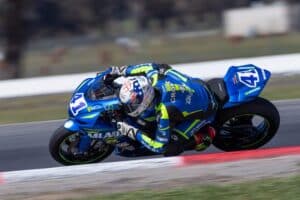 I've diligently categorized my motorcycle gear recommendations into all available categories, with the aim of providing you with a comprehensive analysis that showcases the absolute best options for all your needs. These items are the culmination of in-depth research, extensive testing, and personal use throughout my vast experience of 50+ years in the world of motorcycling. Besides being a passionate rider, I've held leadership positions and offered consultancy services to reputable companies in over 25 countries worldwide. To See Our Top Picks and the Best Prices & Places to Buy: Click Here! |

